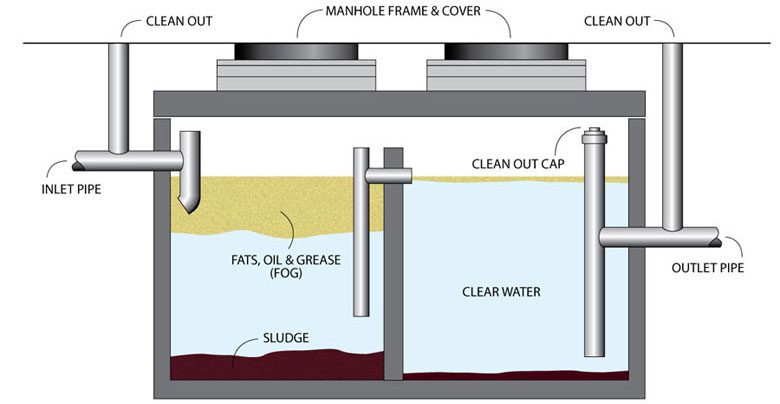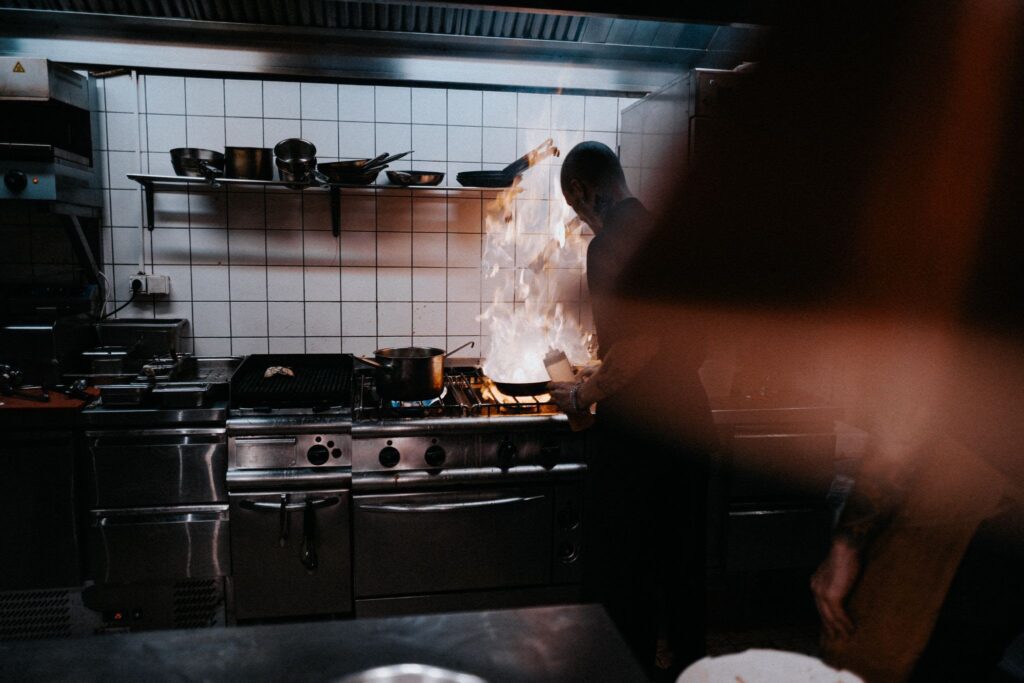What Is a Grease Trap in a Restaurant? Protect Your Plumbing
A grease trap is a simple but essential device in any restaurant kitchen. It stops fats, oils, and grease from clogging your pipes and causing costly backups.
Knowing how it works helps you keep your kitchen running smoothly and avoid plumbing headaches.
What is a grease trap in a restaurant?
A grease trap is a device that captures fats, oils, and grease from kitchen wastewater to prevent pipe clogs and plumbing issues.
Key Takeaways
- A grease trap captures fats, oils, and grease (FOG) before they clog pipes.
- Types include passive (under-sink), automatic removal units, and large in-ground interceptors.
- Installations vary by kitchen size—under-sink or buried outside.
- Clean traps weekly; pump professionally every 1–3 months.
- Neglect leads to clogs, fines, and costly repairs.
Understanding the Basics of a Grease Trap

A grease trap is like your kitchen’s bodyguard—it keeps the nasty stuff from clogging your pipes. We’re talking fats, oils, and grease (aka FOG) that slip down the drain during dish duty.
It works by slowing the flow of wastewater. The heavy solids sink, the grease floats, and only the cleaner water escapes out the back. Think of it as a chill bouncer that only lets the good vibes (and water) through.
You’ll usually find one tucked under the sink or buried below ground, depending on your kitchen size. Either way, it’s lowkey working hard every time you rinse a plate.
If that trap gets overloaded or ignored, things go sideways fast—hello, backup and smells. So yeah, keeping it clean isn’t optional.
Bottom line? It’s not fancy, but it’s crucial. Treat your grease trap right, and it’ll keep your kitchen flowing smooth. No drama, just clean pipes.
Why Restaurants Need Grease Traps
Let’s keep it real—your kitchen pumps out serious grease. Every fry, grill, and sauté adds to the mess. And if that fat hits your plumbing? Total disaster.
Grease traps stop that drama before it starts. They catch fats, oils, and grease (aka FOG) so your pipes don’t choke. Think of them like bouncers for your drain—only the clean stuff gets through.
Skip the trap and you’re risking backups, bad smells, and surprise health code violations. Not exactly five-star vibes.
Plus, fines for dumping grease into the sewer? Not cheap. A grease trap keeps you legal and your crew cooking.
Bottom line: If you’re running a restaurant, this little box is your unsung MVP.
Types of Grease Traps Used in Restaurants
Not all grease traps are built the same. The one you need depends on your kitchen setup and how much cooking you’re cranking out.
- Passive Grease Traps are the old-school, under-sink units. They’re small, easy to install, and perfect for lower-volume kitchens. You’ll need to clean them out often, though—no shortcuts there.
- Automatic Grease Removal Units (AGRUs) are the techy cousins. They skim the grease into a separate container, which means less manual cleanup and fewer clogs. They’re pricier but save you hassle.
- In-ground Interceptors are the big boys. These are buried outside and built for busy spots pumping out serious food volume. They handle large loads but need professional pumping.
Pick the right trap, and your kitchen stays cleaner, greener, and inspection-ready. Ignore it, and you’ll be calling the plumber mid-lunch rush—not the move.
Where Is a Grease Trap Installed in a Restaurant?
Most grease traps live under the sink or just outside the kitchen. If it’s a smaller setup, you’ll usually find it tucked beneath the prep sink.
Bigger kitchens? They go for larger outdoor units buried near the building. Either way, it’s always close to the action—right where grease hits the pipes.
The goal is simple: trap fats before they mess with your plumbing. So if you’re hunting for yours, follow the greasy trail from the kitchen drain. It won’t be far.
How to Maintain a Grease Trap Properly
Keeping your grease trap clean isn’t glamorous, but it saves your pipes—and your wallet.
First up: check it weekly. If you see thick buildup or bad smells, it’s time for a clean. Scoop out the gunk, rinse the screens, and make sure water is flowing like it should. No shortcuts.
Every 1–3 months, get it professionally pumped, depending on how busy your kitchen gets. Don’t wait for a clog to call.
Track cleanings in a log. Sounds boring, but health inspectors love it—and so will your future self.
Lastly, don’t pour boiling water or harsh chemicals down the drain. That just melts grease temporarily and sends the problem deeper.
A little routine here keeps the chaos away later. Grease trap care? It’s your back-of-house cheat code.
What Happens If You Don’t Use a Grease Trap?

Skip the grease trap and you’re asking for trouble. Think clogged pipes, nasty backups, and surprise shutdowns that tank your vibe—and your revenue.
Without a trap, grease builds up fast. It hardens in your plumbing and causes blockages that aren’t cheap to fix.
Worse? You could get slapped with fines or fail inspections. Not exactly a five-star flex.
Bottom line: no trap means more mess, more stress. Get one, clean it often, and thank yourself later.
Frequently Asked Questions
1. How often should you clean a grease trap?
At least every 1 to 3 months. If you’re cooking heavy, more often. Don’t wait for a backup.
2. Can I clean it myself?
Technically, yeah. But it’s messy, smelly, and a pro will do it faster (and better).
3. What happens if I ignore it?
Grease builds up, clogs pipes, and your kitchen turns into a mini disaster zone. Fines aren’t cute either.
Conclusion
A grease trap isn’t just some mystery box under the sink. It’s your behind-the-scenes MVP, keeping nasty clogs and gross smells from wrecking your kitchen flow.
Keep it clean and it’ll do its job like a pro. Neglect it and you’re asking for backups, fines, and way too much drama.
Bottom line? If you’re running a restaurant, don’t sleep in this box. Give it regular checkups and it’ll keep your pipes—and your vibe—running smooth.
